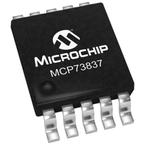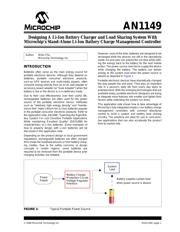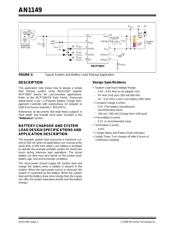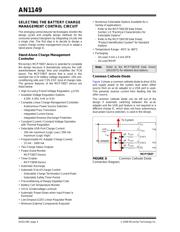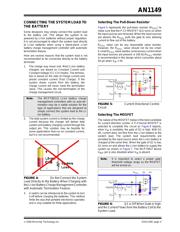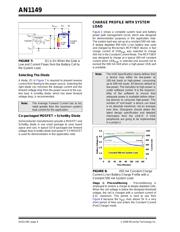herunterladen

© 2008 Microchip Technology Inc. DS01149C-page 1
AN1149
INTRODUCTION
Batteries often serve as the main energy source for
portable electronic devices. Although they depend on
batteries, portable consumer electronic products,
such as GPS devices and multi-media players, often
consume energy directly from an ac-dc wall adapter or
accessory power adapter (or “Auto Adapter”) when the
battery is low or the device is in a stationary mode.
Due to their cost effectiveness over their useful life,
rechargeable batteries are often used for the power
source of the portable electronic device. Attributes
such as “relatively high energy density” and “mainte-
nance free” make Lithium-Ion (Li-Ion) batteries popular
in the portable consumer electronic products. Refer to
the application note, AN1088, "Selecting the Right Bat-
tery System For cost Sensitive Portable Applications
While maintaining Excellent Quality" (DS01088) for
characteristics of Li-Ion batteries. Some examples of
how to properly design with Li-Ion batteries will be
discussed in this application note.
Depending on the product design or local government
regulations, rechargeable batteries are often charged
from inside the handheld devices or from battery charg-
ing cradles. Due to the safety concerns or design
concepts in certain regions, some batteries are
required to be removed from the portable device prior
charging activities are initiated.
However, most of the time, batteries are designed to be
recharged while the devices are still in the operational
mode. An end user can extend the run time while refill-
ing the energy back to the battery for the next mobile
action. The power source now has to supply the device
while charging the battery. The battery can deliver
energy to the system load when the power source is
absent as depicted in Figure 1.
Portable electronic devices have dramatically changed
the way people live and work. They play an important
role in a person's daily life from every day tasks to
entertainment. With the emerging technologies that are
available today, portable electronic designers are trying
to integrate more features into smaller and lighter form
factors while extending the system run times.
This application note shows how to take advantage of
Microchip’s fully integrated simple Li-Ion battery charge
management controllers with common directional
control to build a system and battery load sharing
circuitry. The solutions are ideal for use in cost-sensi-
tive applications that can also accelerate the product
time-to-market rate.
FIGURE 1: Typical Portable Power Source.
Author: Brian Chu
Microchip Technology Inc.
Supply
System
Load
*Battery Charger
Battery supplies system load
*Protection Circuits
*Voltage Regulator
Power
*Interface
when power source is absent.
Designing A Li-Ion Battery Charger and Load Sharing System With
Microchip’s Stand-Alone Li-Ion Battery Charge Management Controller
Verzeichnis

